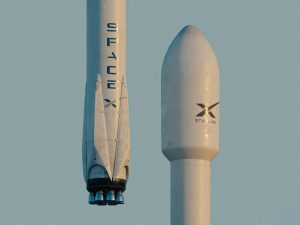
LEO Satellites: Revolutionizing Global Connectivity with WordPress
LEO satellites, or Low Earth Orbit satellites, are a type of satellite that orbit the Earth at an altitude of around 160 to 2,000 kilometers. These satellites have been gaining popularity in recent years due to their ability to provide high-speed, low-latency internet connectivity to remote and underserved areas. In this article, we will explore the world of LEO satellites and their role in revolutionizing global connectivity, and how WordPress is being used to support this technology.
LEO satellites are different from traditional geostationary satellites, which orbit the Earth at an altitude of around 36,000 kilometers. Geostationary satellites have been used for decades to provide television broadcasting, telecommunications, and weather forecasting services. However, they have some limitations, such as high latency and limited bandwidth. LEO satellites, on the other hand, offer several advantages, including lower latency, higher bandwidth, and better signal strength.
How LEO Satellites Work
LEO satellites work by orbiting the Earth in a low altitude orbit, which allows them to provide high-speed internet connectivity to a specific region. They use a network of ground stations to communicate with the satellites and transmit data to and from the internet. The satellites are equipped with transponders, which receive and transmit signals to and from the ground stations. The signals are then transmitted to the internet, where they can be accessed by users.
LEO satellites use a variety of technologies to provide internet connectivity, including radio frequency (RF) signals, laser communications, and millimeter wave technology. RF signals are used to transmit data to and from the satellites, while laser communications are used to transmit data between satellites. Millimeter wave technology is used to provide high-speed internet connectivity to users.
Applications of LEO Satellites
LEO satellites have a wide range of applications, including providing internet connectivity to remote and underserved areas, supporting emergency response and disaster relief efforts, and enabling IoT (Internet of Things) applications. They can also be used to provide broadband services to maritime and aviation industries, as well as to support smart cities and smart grid applications.
In addition to providing internet connectivity, LEO satellites can also be used to support other applications, such as Earth observation, weather forecasting, and navigation. They can also be used to support scientific research, such as studying the Earth’s climate and monitoring natural disasters.
WordPress and LEO Satellites
WordPress is being used to support the development and deployment of LEO satellites. Many companies involved in the development of LEO satellites use WordPress to create websites, blogs, and other online platforms to share information about their services and products. WordPress is also being used to support the development of software applications that are used to manage and control LEO satellites.
WordPress provides a range of tools and plugins that can be used to support the development of LEO satellites, including plugins for creating and managing content, plugins for managing and analyzing data, and plugins for providing security and authentication. WordPress also provides a range of themes and templates that can be used to create websites and online platforms for LEO satellite companies.
Conclusion
In conclusion, LEO satellites are revolutionizing global connectivity by providing high-speed, low-latency internet connectivity to remote and underserved areas. WordPress is being used to support the development and deployment of LEO satellites, and provides a range of tools and plugins that can be used to support the development of software applications and online platforms for LEO satellite companies. As the demand for LEO satellites continues to grow, we can expect to see more innovative applications of this technology in the future.


